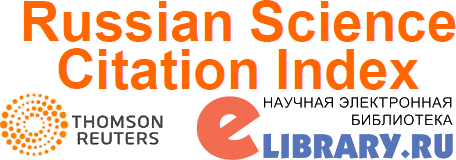Investigating Phytochemical Constituent and Anti-Anemic Properties of Polyphenol-Rich Extract from Carica papaya Leaves in a Rat Model
Abstract
Background: Anemia, affecting 24.8% of the global population, is a common blood disorder caused by deficiencies in haemoglobin or red blood cells due to factors like chronic illness, iron deficiency, and genetics. Symptoms include fatigue, weakness, and cardiac issues. Iron supplements are the standard treatment but can have negative effects. Emerging research focuses on plant-based treatments, especially papaya leaves, rich in polyphenols and nutrients, which show promise in reducing anemia-related oxidative stress and improving red blood cell iron levels. The aim of the study:To determine the anti-anemic activity of polyphenol rich extract of papaya leaves in rats. Phytochemical compounds were analysed by a qualitative method. Materials and methods: The evaluation of antianemia activity was initiated by induction of rats with Phenylhydrazine (60 mg/kgBW) intraperitoneally for three days; after induction, the rats were given polyphenol-rich extract of papaya leaves for 20 days orally. On day 21, rat blood was collected through the inferior vena cava, then the hematological profile, haemoglobin, erythropoietin concentration and malondialdehyde were measured. Results: The results indicated that the polyphenol-rich extract of papaya leaves contained various phytochemical content. The total phenol content was a 41.3256 ± 0.4792 mg GAE/g sample, whereas the total flavonoid content was a 12.87±0.3387 mg QE/g sample. Antioxidant activity from the DPPH assay was evaluated as an IC50 concentration of 40.49 μg/ml. In vivo examination revealed that papaya leaves extract has the potential as antianemic. The dose of 100 mg and 200 mg/kgBW showed hematology profile improvement significantly different from the negative control (p<0.05). Conclusion: Thedoses of 100 mg and 200 mg/kg BW showed potent activity in improving anemic rat condition
Introduction. Anemia is a prevalent blood disorder that affects the production and function of blood cells in the body [1]. Anemia occurs when the body does not have enough red blood cells or haemoglobin, the protein in red blood cells that delivers oxygen throughout the body [2]. Many reasons, such as iron deficiency, vitamin insufficiency, chronic sickness, or heredity, can cause anemia. The signs of anemia can include fatigue, weakness, shortness of breath, pale complexion, and irregular heartbeat [3]. The prevalence of anemia might vary based on the population being investigated and the description of the disease [4]. According to the World Health Organization (WHO), anemia affects around 1.62 billion people globally, about 24.8% of the world population [5]. The prevalence of anemia is highest in preschool-age children, pregnant women, and non-pregnant women of reproductive age. Iron deficiency is the most common cause of anemia globally [6]. The occurrence is higher in specific populations, such as persons with immunological diseases, cancer, and other diseases.
The significance of anemia lies in its wide-ranging health implications. It is often associated with various symptoms like fatigue, weakness, and in severe cases, it can lead to complications such as heart problems. Anemia can be caused by numerous factors, including nutritional deficiencies, chronic diseases, and genetic conditions [7]. The most common type, iron deficiency anemia, is often treated with iron supplements, which can have side effects and limitations in efficacy [8]. In recent years, there has been a growing interest in natural remedies for anemia, largely driven by the desire to find treatments with fewer side effects and better patient compliance. This shift towards plant-based solutions for health problems is part of a broader trend in medical research that seeks to harness the potential of natural compounds for therapeutic purposes.
Polyphenols is a category of compounds abundantly found in plants that have garnered attention due to their antioxidant properties and potential health benefits [9]. They are believed to play a role in mitigating oxidative stress, a condition linked to various diseases, including anemia. The exploration of polyphenols in the context of anemia treatment is still in its early stages, but preliminary studies have shown promising results. Among the various plants studied for their medicinal properties, papaya (Carica papaya L.) stands out. Widely consumed for its nutritional value, papaya is also recognized in traditional medicine for its therapeutic properties. The leaves of the papaya plant, in particular, have been used in various cultures to treat a range of ailments. Rich in essential nutrients and bioactive compounds, including polyphenols, papaya leaves have been the subject of scientific investigations for their potential health benefits. Papaya leaves (Carica papaya L.) is a plant commonly used in traditional medicine to treat various health conditions, including anemia. Papaya leaves are rich in nutrients such as iron, which are essential for the production and function of red blood cells [10, 11]. Moreover, the papaya leaves have an abundance of phenols and flavonoids content and also other includes secondary metabolites in the form of tannins, saponins, alkaloids, terpenoids, and steroids [12]. Additionally, research indicated that leaves from Carica papaya were shown to enhance the production of red blood cells in mice [13]. The iron in papaya leaves is an essential component of haemoglobin as well as potassium that engaged in the management of fluid and electrolyte balance, which is essential for the maintenance of a healthy blood volume [14]. However, there is currently no research that investigates the mechanism by which erythropoietin facilitates the development of red blood cells in animal model,therefore, this study establishes the hypothesis of erythropoietin as a mediator in the maturation of red blood cells.The experimental anemic animal model can be developed in rats by administering Phenylhydrazine (PHZ) [15]. Immune activation is connected with PHZ-induced anemia in the affected biological three systems. PHZ causes erythrocyte lysis by activating immune cells and causing oxidative damage to haemoglobin and membrane phospholipids [16]. This study's primary goal was to examine the phytochemical constituent of papaya leaf extract and optimize the dose of papaya leaf extract as an anti-anemic agent.
The aim of the study. To assess the anti-anemic effects of a papaya leaf extract that is high in polyphenols in rats. Furthermore, the qualitative analysis of phytochemical substances was conducted to examine the secondary metabolite.
Materials and Methods
Materials
The materials used were 96% ethanol (Merck), Phenylhydrazine (Merck), Elisa Kit Erythropoietin (E-Lab Science), gallic acid (Sigma), 1-diphenyl-2-picrylhydrazyl (DPPH) (Sigma), TCA-TBA Reagent, DPPH, AlCl3.6H2O (Merck), 1, Folin–Ciocalteu (Sigma), Quercetin (Sigma), distilled water, sodium acetate (Merck), and sodium bicarbonate (Merck). The tools used are laboratory glassware, microtitration plate 96, microtube, rotary evaporator (Mingyi), Hematology Analyzer XN 450 (Sysmex), UV-Vis Spectrophotometer (PEAK), Elisa microplate reader (DIATEK). The animals used were rats weighing 150-180 grams obtained from the Faculty of Pharmacy, Universitas Sumatera Utara, Indonesia and approved by Animal Research Ethics Committees (AREC), Universitas Sumatera Utara with approval number 0345/KEPH-FMIPA/2023.
Plant Collection and Extract Preparation
A total of 300 grams of powdered dried leaves was extracted using a mixture of ethanol and water (70:30, v/v) through maceration. The extraction process involved constant stirring at a temperature of 25°C. After 24 hours, the mixture was filtered. This method was replicated twice, resulting in a total of three extractions. The extracts were subsequently pooled and subjected to centrifugation at a speed of 3500 rpm for a duration of 10 minutes at ambient temperature. The liquid portion was condensed using a rotary evaporator at a temperature of 38°C to yield the hydroethanolic extract (HESc). The HESc sample was separated using chloroform (1:1 v/v; 3 times), followed by extraction of the water phase using ethyl acetate (1:1 v/v; 3 times). The ethyl acetate fraction was evaporated under reduced pressure and freeze-dried, resulting in the production of a polyphenol-rich extract (PESc) [17].
Phytochemical constituent analysis
The extract was screened for the presence of alkaloids, flavonoids, glycosides, tannins, saponins, triterpenoids, and steroids using the standard procedure for qualitative determination [18, 19].
Thin Layer Chromatography of Flavonoid Compound
Flavonoids were detected by thin-layer chromatography (TLC) using a mobile phase consisting of chloroform: ethyl acetate (6:4 v/v), which was saturated on silica gel in a static condition. A maximum of 10 mg of extract was diluted in 1 mL of methanol. A 5 μL volume of the solution and a 5 μL volume of the reference solution were applied to the medium and allowed to dry. Subsequently, the lower boundary of the silica gel was immersed in the fully saturated mobile phase until the solution reached the upper boundary. The desiccated silica plate was subsequently identified under UV light at a wavelength of 254 nm following exposure to ammonia vapor. The identified locations were further assessed for their motion using their retardation factor (Rf) [20].
Total phenolic content
The extract's total phenolic content was measured using the Folin-Ciocalteu method. 200 μL of crude extract (1 mg/mL) was diluted to 3 mL with distilled water, thoroughly mixed with 0.5 mL of the Folin-Ciocalteu reagent for 3 minutes, and then 2 mL of 20% (w/v) sodium carbonate was added. Absorbance was measured at 650 nm after the mixture had been left to stand in the dark for an additional 60 minutes. The total phenolic content was calculated using the calibration curve, and the results were expressed in milligrams of gallic acid equivalent per gram of dry weight [21].
Total flavonoid content
The total flavonoid concentration was determined using the aluminum chloride colorimetric method. An initial 50 μL of crude extract (1 mg/mL ethanol) was diluted to 1 mL with methanol before being mixed with 4 mL of distilled water and 0.3 mL of a 5% NaNO2 solution. The mixture was then allowed to rest for 5 minutes before being added with 0.3 mL of a 10% AlCl3 solution. The volume was then adjusted to 10 mL with double-distilled water after adding 2 mL of a 1 mol/L NaOH solution. The absorbance at 510 nm was taken after the mixture had stood for 15 minutes. Final results were expressed as mg of equivalent quercetin per gram of dry weight, and the total flavonoid content was calculated using a calibration curve [20].
Determination of DPPH radical scavenging activity
In brief, 1 mL of DPPH solution was added to 1 mL of test samples with concentrations of 0 g/mL, 50 g/mL, 100 g/mL, 150 g/mL, 200 g/mL, and 250 g/mL. Then, 3 mL methanol added. Shaken until thoroughly combined, then placed in a dark room for thirty minutes. The absorbance at 513 nm was then determined using a UV-Vis spectrophotometer. Determine the value of antioxidant activity using the linear regression equation between percent inhibition and sample concentration, where the x-axis represents sample concentration and the y-axis represents percent inhibition (IC50). In order to find the equation y = bx + a. The value of y is subsequently altered to 50. IC50 is the sample concentration required to prevent 50% of DPPH radicals from occurring [22].
Treatment design
Rats were devided into 5 groups: group 1 as Normal Group, Group 2 as PHZ group, and Group 3, 4 and 5 as an extract treatment group. The procedure for examining the antianemia effect was initiated by induction of rats using Phenylhydrazine (60 mg/kgBW) intraperitoneally for three days [23]. After the induction, the papaya leaf polyphenol rich extract was administered at doses of 50, 100, and 1200 mg/kg BW for 20 days orally. On day 21, after administration of the ethanol extract of carica papaya leaves, rat blood was passed through the inferior vena cava, then the hematological profile, haemoglobin, erythropoietin, malondialdehyde were measured by standard procedure.
Statistical analysis
All results were analyzed using ANOVA with the Tukey's Multiple Comparison Test. P values for significance were set at 0.05. Values for all measurements are expressed as the mean ± SD. Histogram data were constructed by using GraphPad Prism Software 9.0 [24].
Results
Phytochemical Constituent Analysis
Qualitative analysis of the compounds in extracts of papaya leaves was performed using a standard procedure in Table 1 and Figure 1.


The results of the phytochemical screening demonstrate that the leaf extracts of Carica Papaya contain a wide variety of compounds. The dried sample and the polyphenol-rich extract contain flavonoids, saponins, tannins, and other compounds, indicating a diverse phytochemical profile. This composition potentially accounts for the therapeutic attributes attributed to papaya leaves. The potential exclusion of alkaloids and steroids/terpenoids from the polyphenol-rich extract, in contrast to the desiccated sample, may be attributed to the particular extraction technique employed for polyphenol enrichment. The optimization of extraction procedures may be guided by this observation, contingent upon the intended phytochemical composition. The TLC analysis conducted at various wavelengths in Figure 1 offers a comparative assessment of the performance of papaya leaf extracts in relation to a recognized standard (Quercetin). The observation of distinct bands suggests the existence of numerous compounds that have different affinities towards the mobile phase. The discernibly more pronounced profile of the extract when exposed to UV light at 366 nm as opposed to 254 nm indicates that certain compounds exclusively exhibit fluorescence at the latter wavelength. This information may facilitate the subsequent identification and quantification of certain compounds found in the extract.
Papaya leaves are a rich source of phenolic compounds and flavonoids, associated with various health benefits, including potential benefits for anemia. Studies have shown that papaya leaves contain a high level of total phenolic compounds, which have antioxidant properties and may help to protect against oxidative stress and inflammation [25]. The result in Table 2 revealed that the total phenol content was 41.3256 ± 0.4792mg GAE/g sample, whereas total flavonoid content was 12.87± 0.3387mg QE/g sample, moreover for the antioxidant assay was evaluated that IC50 was 40.49 μg/ml.

Anti-anemic evaluation
In vivo anti-anemic evaluation was carried out by inducing experimental rats using Phenylhydrazine. Phenylhydrazine is a chemical substance that has been used to induce hemolytic anemia in animals model. The evaluation of anti-anemic activity of papaya leaf extract is presented in Figure 2 and 3. Moreover, blood morphology can be seen in Figure 4.


Discussion. Papaya leaves are a rich source of phenolic compounds and flavonoids, associated with various health benefits, including potential benefits for anemia. Studies have shown that papaya leaves contain a high level of total phenolic compounds, which have antioxidant properties and may help to protect against oxidative stress and inflammation [25]. The result in Table 2 revealed that the total phenol content was 41.3256 ± 0.4792 mg GAE/g sample, whereas total flavonoid content was 12.87± 0.3387 mg QE/g sample, moreover for the antioxidant assay was evaluated that IC50 was 40.49 μg/ml.
Method modifications were made during the extraction process in order to increase the phenol content; the separation procedure was supplemented with chloroform and ethyl acetate to increase the phenol content. Phenols, known for their aromatic structure with one or more hydroxyl groups, require specialized extraction methods for efficient separation. Initially, chloroform (CHCl₃), a non-polar solvent, is used to remove less polar impurities [26]. Subsequently, ethyl acetate (CH₃COOCH₂CH₃), a moderately polar solvent, is employed to selectively dissolve the phenolic compounds [27], This two-step approach, leveraging the distinct polarities of the solvents, optimizes the yield and purity of the phenols. The resulting phenol-rich ethyl acetate layer is then separated, and the solvent removed, typically through evaporation, to yield a concentrated phenol extract.
Figure 2(a) and 2(b) suggested that the RBC and HB count of rats at several dose variations at a dose of and 200 mg/kg BW was significantly different to the PHZ control group (P ≤ 0.01), this suggests that the administration of papaya leaves can decrease PHZ induced anemia and increase the RBC count. Moreover, haemoglobin levels increased significantly at all treatment doses. Erythropoietin concentration evaluation present in Figure 1(c) at treatment group of 100 and 200 mg/kg BW suggested significance found (P < 0.05) compared to PHZ group, Furthermore the result MDA evaluation in Figure 1(d)) reported that the papaya leaf extract at a dose of 50,100 and 200 showed mg/kg BW improvement (P ≤ 0.0001) compared to PHZ group. Overall result suggested that the lowest dose that showed potent activity as an anti-anemic agent is 100 mg/kgBW. The findings of this study demonstrate that papaya leaf extract has a notable anti-anemic impact. This is supported by the observed rise in red blood cell and haemoglobin levels, as well as a decrease in bleeding time and an increase in platelet count in rats with induced anemia caused by PHZ. These results support the concept that phenolic chemicals, which are particularly found in papaya leaves, can improve anemia by safeguarding red blood cells from oxidative harm, thus extending their lifespan [28].
The improvement in red blood cell concentration and haemoglobin levels indicate an improvement in the production of blood cells. This is supported by the increased levels of erythropoietin (EPO) in rats treated with 100 and 200 mg/kg BW of papaya leaf extract, suggesting a potential stimulating effect on the production of red blood cells, potentially through the involvement of the kidney and other blood-forming tissues. Erythropoietin (EPO) plays a crucial role as the primary hormone in the synthesis of red blood cells. An elevated level of EPO is commonly seen as a compensatory reaction to anemia [29].
An important discovery of this study is the substantial reduction in malondialdehyde (MDA) levels following the ingestion of papaya leaf extract. MDA serves as a biomarker for oxidative stress and lipid peroxidation. Its decrease indicates that the antioxidant qualities of papaya leaf phenolics efficiently alleviate oxidative stress, a primary mechanism via which phenylhydrazine causes anemia [30]. When comparing these findings to previous studies, the antioxidative activity of papaya leaf extract aligns with the research conducted by Gheith and El-Mahmoudy in 2019, which observed a notable reduction in oxidative indicators in anemia rat model with acute renal injury after administration of the herbal extract [14]. Nevertheless, this study expands upon previous discoveries by providing quantitative evidence of the extract's effectiveness, which is directly proportional to the dosage. The results indicate that a minimum dose of 100 mg/kg BW is required to demonstrate anti-anemic characteristics.
The current study shows a more significant increase, suggesting a potentially more pronounced or stronger stimulatory effect of papaya leaf extract on EPO production, which may facilitate red blood cell maturation [31]. The putative processes presented here are substantiated by the existing literature on the potential of phenolic compounds to effectively eliminate harmful free radicals and safeguard erythrocytes from oxidative harm [32]. It is crucial to acknowledge the constraints of this study, which include the requirement for additional research on the specific bioactive compounds present in papaya leaves that are responsible for the observed effects, the molecular-level mechanisms involved, and the long-term safety and effectiveness of these extracts in different populations. The study's findings have important implications for the field of herbal medicine. It suggests that herbal medicine could be a promising approach for managing anemia, however further research is needed to confirm these results in real-world medical settings. Further investigation should prioritize the identification of the bioactive components present in papaya leaf extract and the clarification of the intracellular mechanisms responsible for the reported hematopoietic and antioxidative benefits.
Figure 4 a illustrates the visual characteristics of red blood cells in regular rat blood, which exhibit a uniform size and shape and possess a distinct biconcave disc morphology. Typical red blood cells exhibit a pinkish red hue and possess a substantial central region as a result of the presence of haemoglobin. In contrast, Figure 4b displays significant variations in the dimensions and hue of the red blood cells in the PHZ-treated group, accompanied with hypochromic cells which suggest the existence of anemia [33].These data thus verified that PHZ can cause hemolytic anemia by impairing red blood cells, particularly by suppressing the generation of new red blood cells in the bone marrow and eliminating preexisting red blood cells [34]. Despite not completely restoring the size, shape, and color of red blood cells damaged by PHZ (Figure 4c-e), treatment with polyphenol rich extract of papaya leaves at different concentrations significantly enhanced red blood cell production and increased the haemoglobin concentration in the anemic rat model.
Conclusion. In vivo examination revealed that papaya leaf extract has the potential as antianemia. Several treatment doses showed an improvement in the haematological profile that was significantly different from the PHZ control (p<0.05). The doses of 100 mg and 200 mg/kg BW have the potential to be candidates for antianemia agents.
Financial support
The research was funded by Contract for the Universitas Sumatera Utara with World Class University (WCU) Research Grant for Fiscal Year 2022 between the General Manager of the Higher Education Endowment Fund Program (DAPT) for 2022 and the Head of the University of North Sumatra Research Institute Number: 20084.1/UN5.4.17/TPM/2022 December 16 2022 and the 2022 USU WCU Research Contract Number 53/UN5.2.3.1/PPM/KP-WCU.





















Reference lists